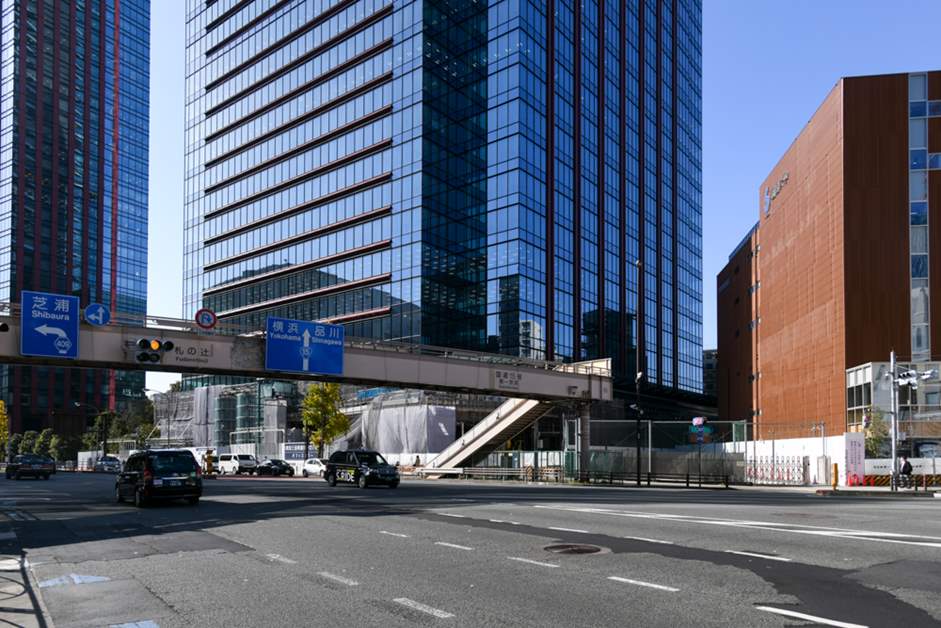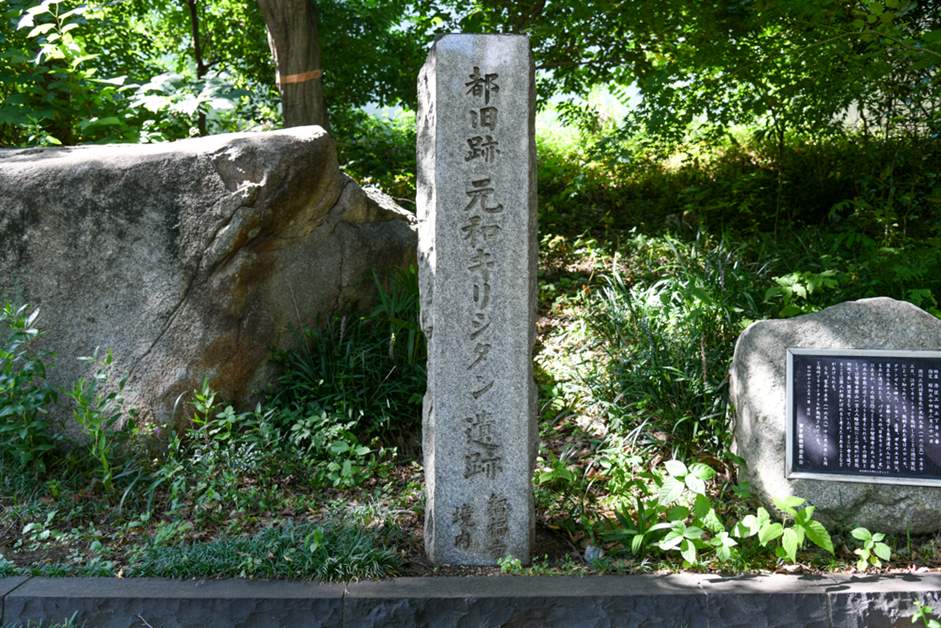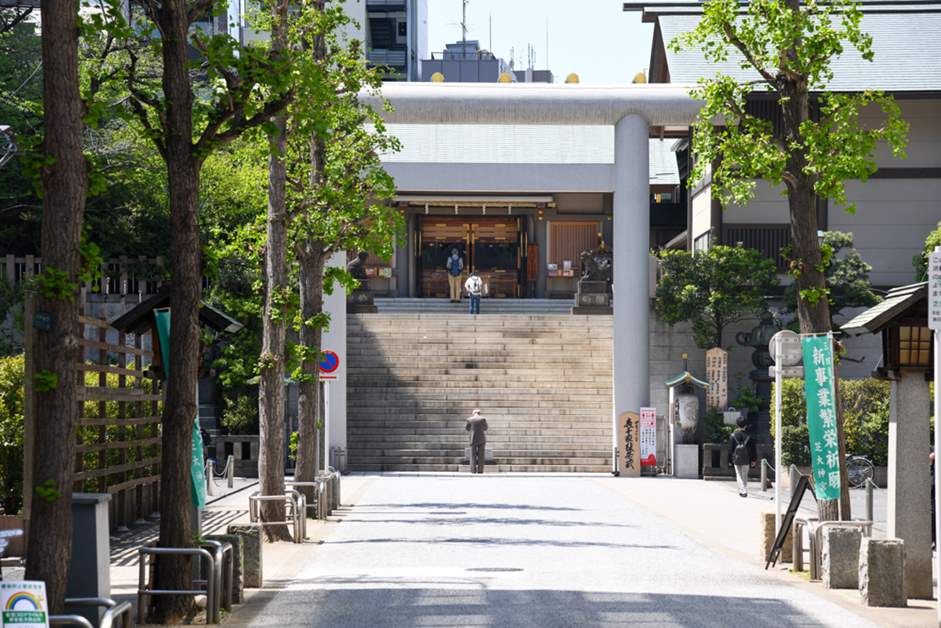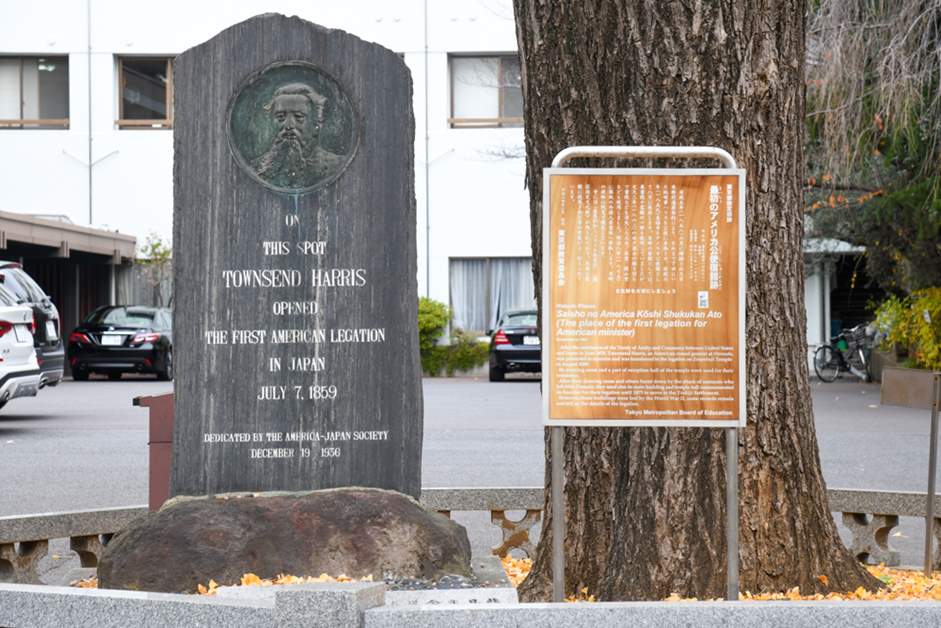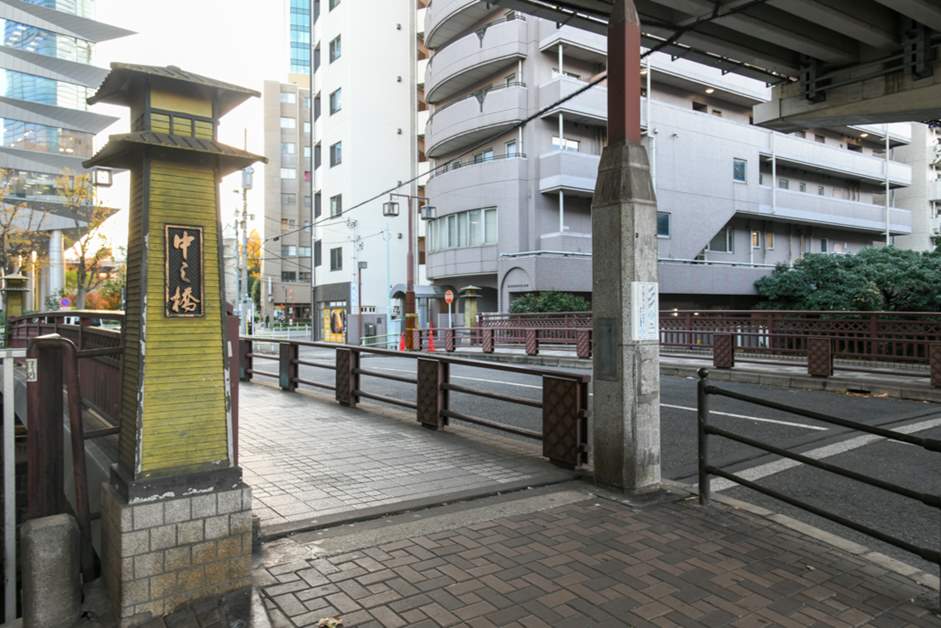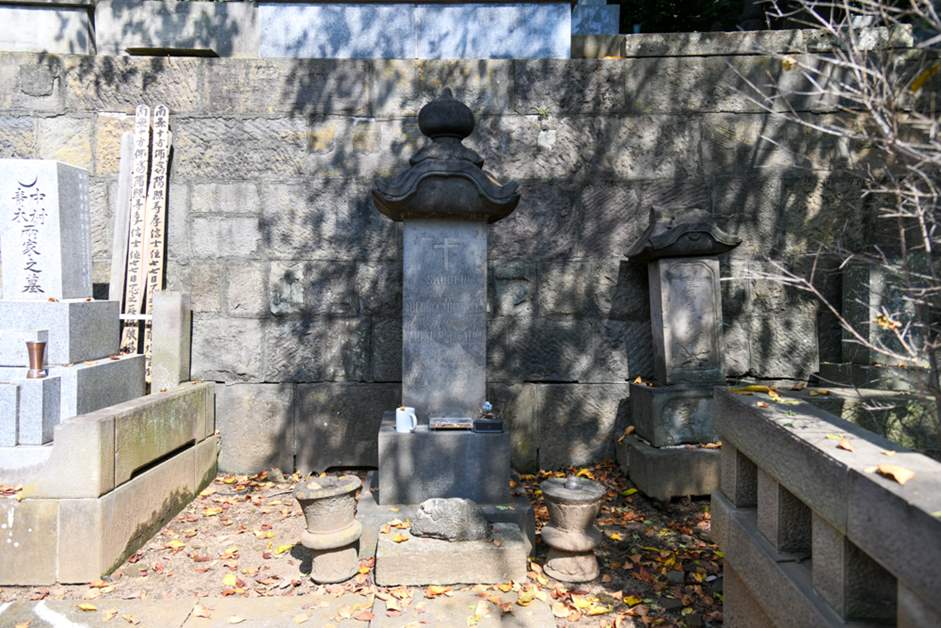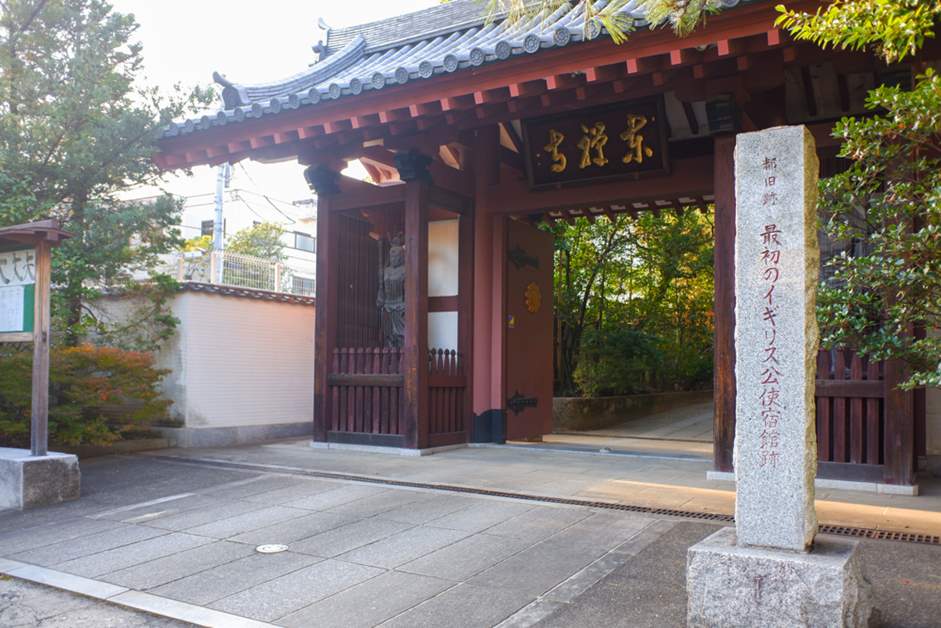[Minato History Walk] "Edo's Case Files In Minato Ward": Touring Sites of Major Incidents that Changed History
After Ieyasu Tokugawa's entry into the shogunate, Minato Ward developed at a startling pace under the Shogunate, becoming one of the centers of Edo, where samurai residences of various domains, temples and shrines such as Zojoji Temple and Shiba Daijingu Shrine, and merchants' quarters built along the streets intersected. Minato Ward has been the scene of many important events that have appeared in history textbooks. This year's Minato-ku History Walk, titled "Edo Incidents in Minato Ward," takes a close look at major incidents that took place in Minato Ward. We will visit spots related to these incidents.
[Genna 9 (1623)] The tragedy of the Christians who were suppressed by the Prohibition of Christianity
The first incident introduced here is one that took place in the early Edo period.
The location is about an 8-minute walk from the west exit of JR Tamachi Station. Cross the Fuda-no-Tsuji intersection, which was once the entrance to Edo from the Tokaido. It was also where "Fuda-no-Tsuji", a place where the Shogunate's policies and codes were posted, was established. We then walk a short distance toward Shinagawa, where a stone monument, "Motowa Christian Site" stands on a small hill in a square.
The location is about an 8-minute walk from the west exit of JR Tamachi Station. Cross the Fuda-no-Tsuji intersection, which was once the entrance to Edo from the Tokaido. It was also where "Fuda-no-Tsuji", a place where the Shogunate's policies and codes were posted, was established. We then walk a short distance toward Shinagawa, where a stone monument, "Motowa Christian Site" stands on a small hill in a square.
Fuda-no-tsuji Intersection
This place is related to the Prohibition of Christianity established by the Shogunate in Keicho 17 (1612). Tokugawa Ieyasu, who had taken control of the country, felt threatened by Christianity that was spreading throughout the country that year and issued a prohibition decree, forcing believers to convert from Christianity. The Shimabara-Amakusa Revolt that took place in present-day Nagasaki Prefecture in Kanei 14 (1637) is the most famous example of Christian repression during this period, but large-scale Christian executions were also carried out in Edo in December of Genna 9, the reign of Iemitsu.
"Those executed were Elonimo, Father De Angeles, Simon, Tofu, Father Galuwes, Chusui Hara, and fifty others, and a hill at the entrance to the Tokaido leading to Kyoto was chosen," says an explanatory board next to the monument, suggesting that this area was the execution site.
Among them, Chusui Hara was a Shogunal retainer who served Tokugawa Ieyasu for a long time, but he was a tragic figure who resisted apostasy and was banished from Sunpu Castle. It is said that the Christians were dragged through the city and burned at the stake. It is also recorded that 15 years later, in Kanei 15 (1638), many more Christians were executed here.
Among them, Chusui Hara was a Shogunal retainer who served Tokugawa Ieyasu for a long time, but he was a tragic figure who resisted apostasy and was banished from Sunpu Castle. It is said that the Christians were dragged through the city and burned at the stake. It is also recorded that 15 years later, in Kanei 15 (1638), many more Christians were executed here.
[Genroku 15 (1703)] The setting of "Chushingura," where loyalty to the lord was fulfilled
The next incident took place in the mid-Edo period. It is the Kira Residence raided by the 47 Ako Gishi warriors, which many people will know well from "Chushingura."
Although the location of the Kira Residence is in Sumida Ward, there are many related spots in Minato Ward, including the place where Asano Takuminokami committed seppuku after the Edo Castle Matsuno Hallway incident, triggering the raid. There is also Sengakuji Temple where Takuminokami and the other warriors are buried. Please refer to the following article for more information on the places associated with Chushingura.
(DATA)
A Bushido Story that Represents Japan: Touring the Origins of Chusingura & Ako Roshi in Minato, Tokyo
https://visit-minato-city.tokyo/ja-jp/articles/450
(DATA)
A Bushido Story that Represents Japan: Touring the Origins of Chusingura & Ako Roshi in Minato, Tokyo
https://visit-minato-city.tokyo/ja-jp/articles/450
[Bunka 2 (1805)] "Megumi no Kenka (Fight of the Megumi)," which became the subject of kabuki and rakugo
Fire and fighting are the flowers of Edo is a saying that conveys the state of the city of Edo to this day. This phrase expresses the fact that firefighters were active in Edo because of the many fires that broke out in the city, and that Edokko (people of Edo) are short-tempered. The "Mekumi no Kenka" is an incident related to such firefighters and fights in Edo.
In the Edo period, theatrical performances and sumo wrestling were held in the precincts of shrines in the downtown area as entertainment for the common people. This incident occurred in Bunka 2, during a hana-sumo (touring show) held in the precincts of the Shiba Shinmei-gu Shrine.
At that time, local steeplejacks were allowed to watch sumo without paying an admission fee. Tatsugoro, a member of the Megumi, a local firefighter group, also tried to enter the venue without paying an admission fee, but one of his companions was not a local firefighter, and they had an argument at the entrance. Kuryuzan, a sumo wrestler who happened to be passing by, joined them, and a commotion started. One of the firefighters rang the half-bell, which is usually rung in case of fire, to rally his friends, and a big fight ensued, involving the "Megumi" firefighters and the sumo wrestlers, resulting in one death.
"The precincts of Shiba Shinmei-gu Shrine" is the "Shiba Oojingu" in Shiba Daimon. The incident, in which 36 people were tried by magistrates, quickly became the talk of the town and was later adapted into popular Kabuki and Rakugo. It became a story that is still widely passed down today as a major incident in Edo.
At that time, local steeplejacks were allowed to watch sumo without paying an admission fee. Tatsugoro, a member of the Megumi, a local firefighter group, also tried to enter the venue without paying an admission fee, but one of his companions was not a local firefighter, and they had an argument at the entrance. Kuryuzan, a sumo wrestler who happened to be passing by, joined them, and a commotion started. One of the firefighters rang the half-bell, which is usually rung in case of fire, to rally his friends, and a big fight ensued, involving the "Megumi" firefighters and the sumo wrestlers, resulting in one death.
"The precincts of Shiba Shinmei-gu Shrine" is the "Shiba Oojingu" in Shiba Daimon. The incident, in which 36 people were tried by magistrates, quickly became the talk of the town and was later adapted into popular Kabuki and Rakugo. It became a story that is still widely passed down today as a major incident in Edo.
[Mannen 1 (1861)] A genius interpreter who lost his life during the turmoil at the end of the Edo period
The time was the end of the Edo period. In Ansei 5 (1858), five years after the arrival of the black ships led by Perry, the Treaty of Amity and Commerce Between the United States and the Empire of Japan was concluded. In the following year, the first American legation opened in the precincts of Zempukuji Temple in Azabu. Henry Heusken, an interpreter and secretary, was the right-hand man of Townsend Harris, the first minister to Japan at that time, and contributed to the conclusion of the treaty.
The first United States legation inside the Zempukuji Temple precincts
Born in Amsterdam, the Netherlands, Heusken was fluent in four languages despite being in his twenties. He used his ability to build relationships with diplomats in many countries. However, the tragedy happened in January of Mannei 1. On the day he visited the Prussian mission's quarters in what is now Iikura Park, he was on his way back to the legation in Zempukuji when he was attacked by Satsuma domain warriors near Nakanobashi Bridge, and died from a wound to his abdomen. The incident was very tragic, as it took place amidst the turbulent times of the time when the ideology of exclusionism was very strong.
The commemorative statue of "The site of the first United States legation" inside Zempukuji Temple
Heusken's Grave inside Korinji Temple
Heusken's body was moved to Kōrin-ji Temple, where burial was possible, and buried. There is still a grave in the precincts. He lost his life in a foreign land in the middle of his aspirations, and can be said to be a shadow great who contributed to the Japan of future generations.
[Bunkyu 1 (1861)] The "Tozenji Incident," in which the minister's actions aroused antipathy
As Japan opened to the outside world, Japan followed the United States in signing trade treaties with various countries, and the first four countries (the United States, the United Kingdom, France, and the Netherlands) established their first legations in Minato Ward. Of these, the United Kingdom established its first legation in Japan at Tozenji Temple in Takanawa. The first minister to serve at this legation was Rutherford Alcock, who came to Japan after serving as consul in Shanghai.
Alcock was an active figure, such as being the first foreigner to stand on the summit of Mt. Fuji. In 1868, when he arrived in Nagasaki on his way back from Hong Kong, he took the overland route back to Edo, against the advice of the shogunate, which recommended that he return to Edo by sea. This, however, aroused the antipathy of the expulsionists, who claimed that "foreigners had defiled Japan, the land of the gods." Immediately after his return to Tozenji, he was attacked by Mito domain ronin.
Alcock was an active figure, such as being the first foreigner to stand on the summit of Mt. Fuji. In 1868, when he arrived in Nagasaki on his way back from Hong Kong, he took the overland route back to Edo, against the advice of the shogunate, which recommended that he return to Edo by sea. This, however, aroused the antipathy of the expulsionists, who claimed that "foreigners had defiled Japan, the land of the gods." Immediately after his return to Tozenji, he was attacked by Mito domain ronin.
Tozenji Temple
The incident resulted in injuries on both sides, including Japanese guards who were guarding the legation. Alcock was unharmed, but two of his men were wounded. A year later, another incident took place here, in which Matsumoto domain soldiers guarding the legation attacked a deputy minister, and both incidents are referred to together as the "Tozenji Incident." Tozenji Temple, now a designated national historic site, retains its original Okushoin (closed to the public) and entrance, and as a Zen temple with a three-story pagoda, it welcomes many visitors.
In this article, we introduced historical spots in Minato Ward from a slightly different perspective of major incidents during the Edo period. All of these spots are easily accessible by public transportation, so we encourage you to visit them with other sightseeing activities.




.jpg)
